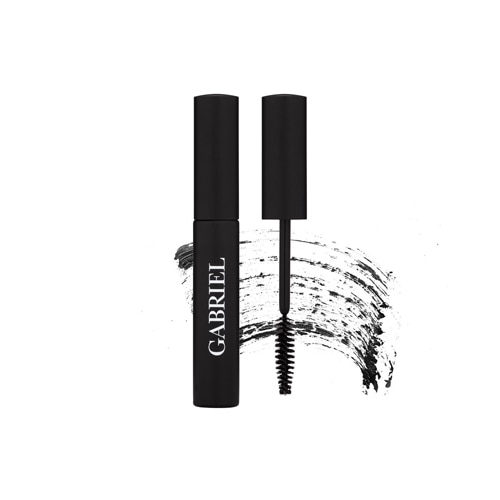When it comes to skincare, “use daily” should not be dangerous advice. But with the proliferation of so many synthetic compounds—according to the Environmental Working Group (EWG), more than 1 in 5 of all personal care products contain chemicals linked to cancer. The takeaway: Every spritz contains risk. Yet skincare doesn’t need to be fraught with carcinogens. There’s an abundance of certified organic skincare products on the market that seem to grow more sophisticated each year.
How do you make smart choices? Just like produce has its dirty dozen list, based on levels of pesticide exposure, we are offering you a dirty dozen list of toxins found in personal care products. What makes toxins in personal care particularly insidious is the cumulative factor—it’s not just the phthalates in the perfume, but the phthalates in your deodorant, moisturizer, hair conditioner, bath gel, and the many other products you use daily. A single exposure to any of them is unlikely to cause harm, but daily exposure over a lifetime adds up to a substantial body burden.
The average adult uses nine personal care products a day, with roughly 120 chemicals involved, many of which are incompletely tested for toxicity. In the US, the beauty industry has an “innocent-till-proven-guilty” approach to ingredients. Unless a chemical used in beauty products is proven to cause harm to human health, it is classified as GRAS, or “generally recognized as safe.” Europe, however subscribes to the precautionary principle—“guilty till proven innocent.”
The best way to be safe is to be educated. The most effective thing we consumers can do is read ingredient lists carefully in order to avoid chemicals that are known to be harmful, even though they continue to be widely used. Here is short list of a dozen toxins you want to have on your radar.
1. Antibacterials (triclosan)
Found in hand sanitizers, deodorants, and other antibacterial products, triclosan has been linked to cancer and endocrine disruption. Numerous studies have found that washing with regular soap and warm water is just as effective at killing germs.
2. Coal Tar
The active ingredient in dandruff shampoos and anti-itch creams, coal-tar is a known carcinogen banned in the EU, but still used in the US. It’s often found in hair dyes as well. It’s linked to cancer and organ toxicity.
3. DEA/TEA/MEA
Restricted in Europe for its suspected link to cancer, these suspected carcinogens are used as emulsifiers and foaming agents for shampoos, body washes, soaps.
4. 1,4-Dioxane
A known animal carcinogen and a possible human carcinogen that can appear as a byproduct contaminant in ingredients containing the letters "eth" such as sodium laureth sulfate, ceteareth, oleth and most other ethoxylated "eth" ingredients.
5. Formaldehyde
Formaldehyde adverse health effects include immune-system toxicity, respiratory irritation and cancer in humans. Banned in the EU, it’s found in nail products, hair dye, fake eyelash adhesives, baby bath soap and shampoos.
6. Fragrance
The catchall term "fragrance" hides the endocrine disrupting chemicals known as phthalates, which cause reproductive and developmental harm. They are found in personal care products such as nail polish, skin moisturizers, and perfumes. Due to the labeling loophole, manufacturers do not have to list phthalates on ingredient decks, so the best way to steer clear is to skip lotions, colognes, laundry detergents, air fresheners, and other products that use synthetic fragrances, (for a full list of cosmetic products that contain phthalates, check out EWG's Skin Deep Database. Or look for products that call out the fragrance as derived from natural essential oils or labeled as “no synthetic fragrance” or “phthalate-free.”
7. Lead
A known carcinogen that can cause brain damage and nervous system damage, lead is found in lipstick and hair dye. The problem? Even though there only trace amounts, many women apply—and reapply—lipstick up to ten times a day. You don’t see led listed on the labels because it’s a contaminant, not an ingredient.
8. Oxybenzone
The active ingredient in chemical sunscreens that accumulates in fatty tissues and is linked to hormone disruption and cellular damage.
9. Parabens
Parabens are common preservatives that appear in a wide array of products. Sodium methylparaben, is banned in cosmetics by the E.U. Parabens are linked to cancer, endocrine disruption, and reproductive toxicity.
10. Petroleum Distillates
Considered carcinogenic, petroleum distillates are prohibited or restricted for use in cosmetics in the E.U. but are found in the US in products that contain petroleum jelly and mineral oil. Look out for the terms "petroleum" or "liquid paraffin"—they can show up in mascara, foot powder, chapstick, and many other personal care products.
11. P-Phenylenediamine
Commonly found in hair dyes, this chemical can damage the nervous system, cause lung irritation and cause severe allergic reactions. It's also listed as 1,4-Benzenediamine; p-Phenyldiamine and 4-Phenylenediamine.
12. Toluene
Known as a hormone disruptor, it’s used in nail polish as a solvent that helps the polish go on smoothly but is actually neurotoxic.




